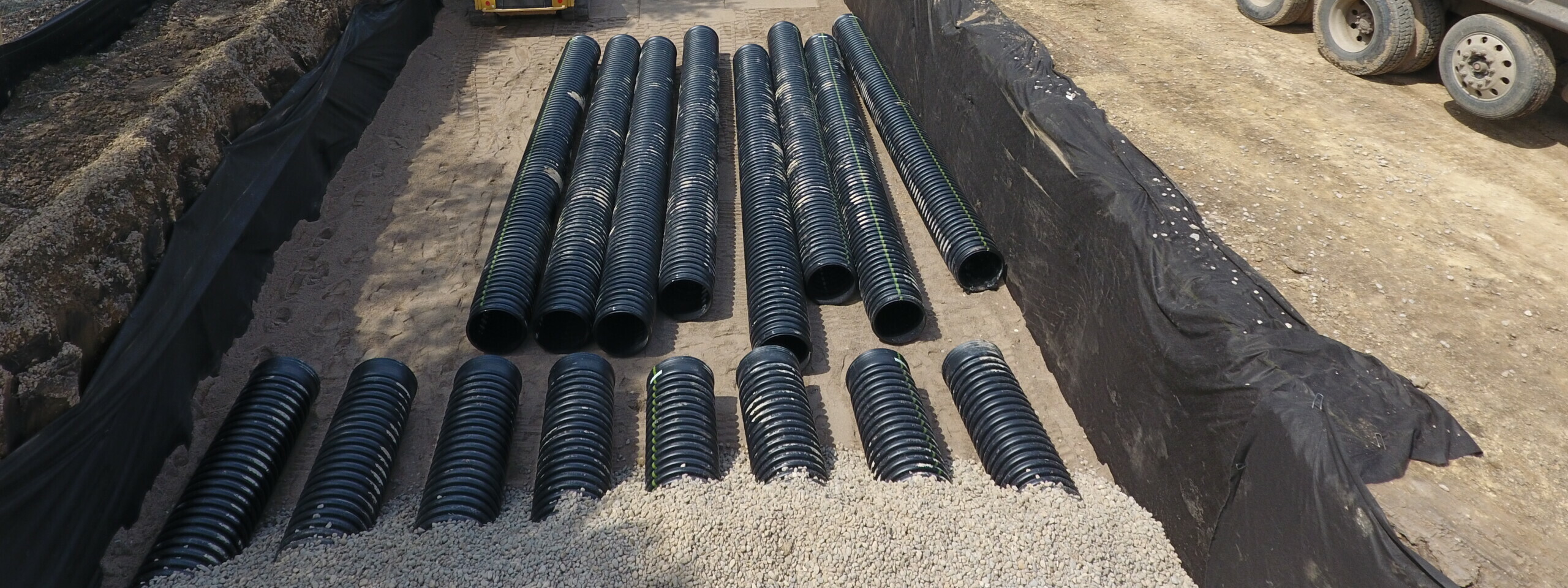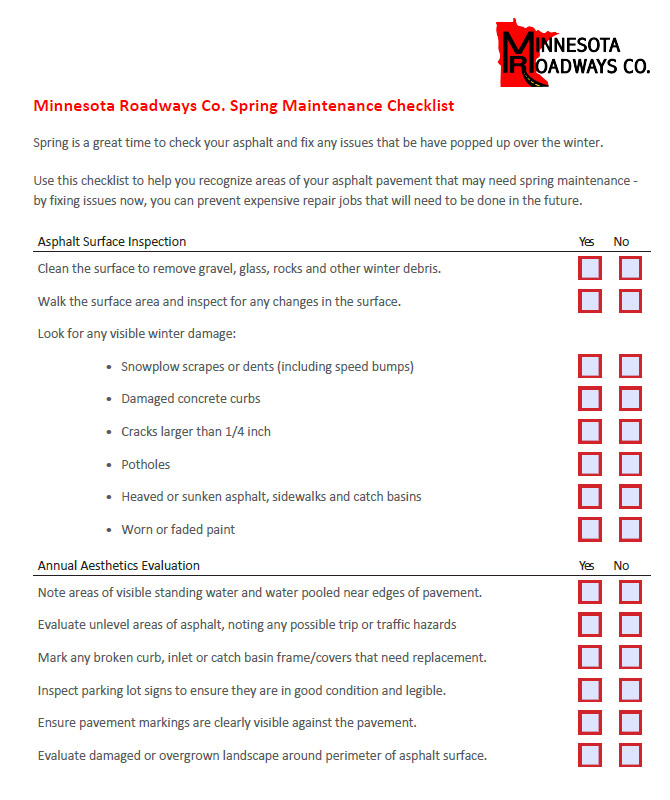Drain Tile Installation

One of the major causes for asphalt pavement failure is water trapped in the sub soils. The trapped water creates soft areas in the subgrade, reducing the strength of the pavement and making it highly susceptible to frost movement. Indications that drainage tile is needed are usually some form of water seeping through the asphalt, either through hairline cracks, potholes, or areas of the asphalt which are always saturated. Drain tile can be used to help dry out or re-direct water infiltration to the sub base.
The drain tile is installed with a filter fabric wrap and back filled with a free draining material 3 to 4 feet below the surface, allowing water to easily enter the system and be directed to the existing storm sewer system.
When Should Drain Tile Be Utilized?
- A parking lot in a low lying area is a great candidate for drain tile installation. If a parking lot is surrounded by areas of higher elevation, the perimeter of the lot should be lined with drain tile so the natural ground water flow can be caught before entering the sub base of the parking lot.
- Soil types are another reason drain tile installation should be considered. If the sub base is made up of a clay mixture, it will hold more moisture than a soil type with finer gradation. Drain tile can be placed to help dry out the surrounding soils.
- When water seepage is visible. If the asphalt surface, in a reconstruction project, shows moisture on a dry day, it is likely that the sub base is saturated and needs to be dried out.









